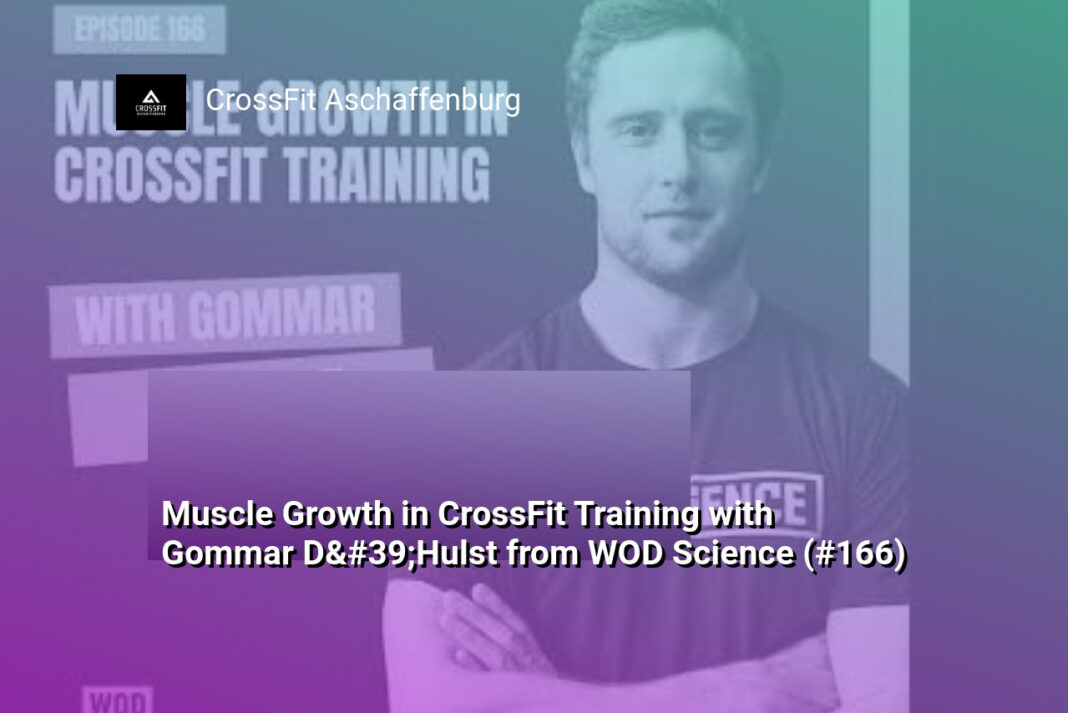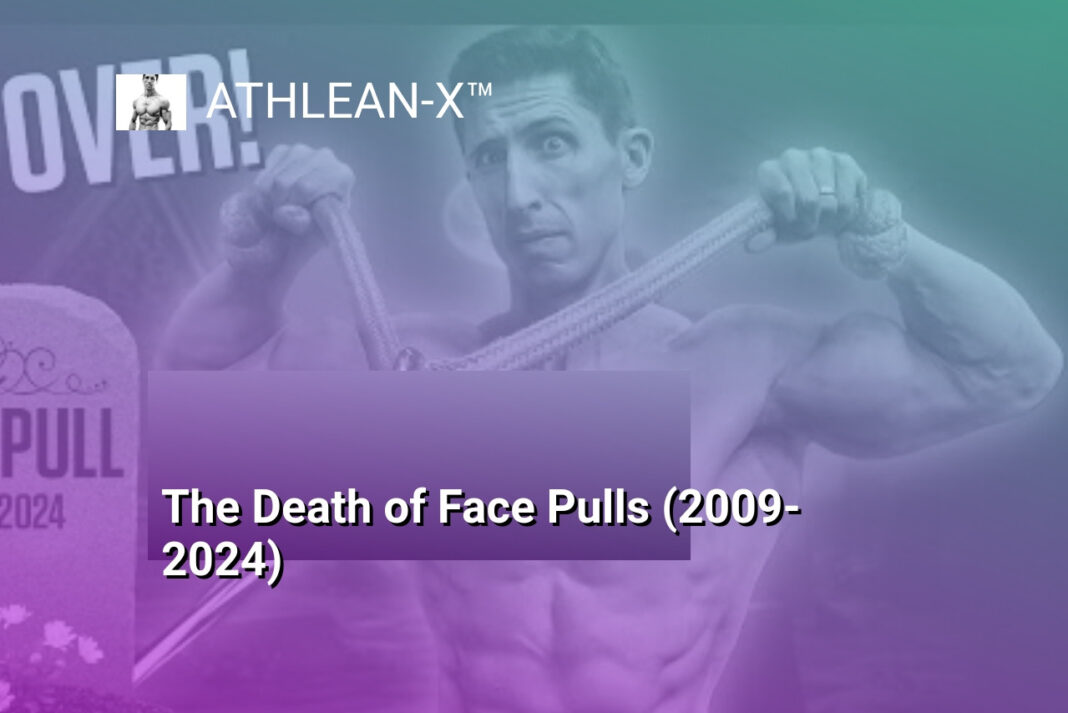The Bottom Line:
Here is a summary of the main points from the text in the requested format:
- Elite CrossFit athletes have strength levels close to elite weightlifters (90-95% as strong), but endurance levels much lower than elite cyclists (only 70-75% as high), suggesting CrossFit training is more strength-biased and causes some interference with endurance adaptations.
- One of the major drivers of strength and muscle gain is training volume – the number of times you contract a muscle above 30% of your 1 rep max. Many CrossFit workouts, even with lighter weights, have you working to failure which stimulates these adaptations.
- Muscle soreness is more an indicator of how unaccustomed your muscles are to a certain training stimulus, not necessarily of the magnitude of adaptations occurring. With consistent training, soreness decreases over time even as you continue to make gains.
- An upcoming study will test whether separating strength and endurance/WOD components of CrossFit (doing them on separate days) will lead to better adaptations over 8 weeks compared to the usual combined format. The hypothesis is separating them may reduce interference effects.
- While combined strength+WOD training clearly works well for CrossFit, as evidenced by elite athletes, the separate training model has never been rigorously tested head-to-head, so the study aims to assess if it could be an even more optimal approach for development.
Understanding the Interference Effect in CrossFit Training
The Interference Effect in CrossFit Training
The interference effect refers to the phenomenon where strength training and endurance training can interfere with each other’s adaptations when performed concurrently. In the context of CrossFit, which combines both strength and endurance elements in its workouts, understanding and managing the interference effect is crucial for optimizing gains.
Balancing Strength and Endurance
One of the key challenges in CrossFit programming is striking the right balance between strength and endurance training. While elite CrossFit athletes demonstrate impressive strength, often approaching levels of dedicated weightlifters, their endurance capacity tends to be lower compared to endurance sport specialists like cyclists. This suggests that the high volume of strength work in CrossFit may interfere with endurance adaptations to some extent.
However, the interference effect doesn’t mean that simultaneous improvements in strength and endurance are impossible. Proper programming and periodization can help minimize the interference and optimize adaptations in both domains.
Strategies to Minimize Interference
Several strategies can be employed to mitigate the interference effect in CrossFit training:
1. Separating strength and endurance sessions: Performing strength and endurance workouts on different days or with sufficient rest in between (e.g., 6 hours) can help reduce the acute interference between the two types of training.
2. Periodizing training blocks: Structuring training in blocks that focus on either strength or endurance can allow for more targeted adaptations while still maintaining a base level in the other domain.
3. Managing training volume: Ensuring that the overall training volume is appropriate and not excessive can help prevent overtraining and allow for optimal recovery and adaptations.
4. Individualizing training: Different athletes may have different responses to concurrent training, so tailoring the programming to individual needs and recovery capacities is important.
By understanding the interference effect and implementing strategies to manage it, CrossFit athletes and coaches can work towards optimizing strength and endurance gains simultaneously, ultimately leading to improved overall performance in the sport.
Muscle Memory: How It Impacts Strength and Skill Retention
The Muscle Memory Phenomenon
Muscle memory is a fascinating aspect of human physiology that enables us to retain strength and skill even after periods of inactivity. Studies have shown that individuals who have built up significant strength through training are able to regain their previous strength levels more quickly after a layoff compared to those who never achieved that level of strength.
While muscle memory was once thought to be primarily a neurological effect, with the neural pathways remaining intact even when muscles atrophy, recent research suggests that there may also be a cellular component. Certain epigenetic changes within muscle cells that occur during training may persist even during periods of detraining, allowing the muscle to “remember” its former strength and size.
Implications for CrossFit Athletes
For CrossFit athletes, the muscle memory phenomenon has important implications. It means that the strength and skills developed through consistent training are not easily lost. Even if an athlete needs to take time off due to injury, illness, or other life circumstances, they can have confidence that they will be able to regain their previous fitness levels more quickly than if they were starting from scratch.
This is especially relevant when it comes to complex skills like Olympic lifts and gymnastics movements. While some technique may deteriorate during a training layoff, the neural pathways laid down during the initial skill acquisition remain intact, allowing the athlete to get back up to speed rapidly when they resume training. Anecdotally, many CrossFit athletes report being able to perform skills like muscle-ups or double-unders even after extended breaks from training them.
Leveraging Muscle Memory in Training
CrossFit athletes and coaches can strategically leverage the muscle memory effect in their training. Periods of focused strength work or skill acquisition can be used to “bank” adaptations that can then be drawn upon later, even if subsequent training shifts to a different focus for a time. The broad, general nature of CrossFit training lends itself well to maintaining a wide variety of physical adaptations over the long term.
Understanding muscle memory can also help provide peace of mind to athletes who need to take a break from training. Rather than fearing a total loss of fitness, they can trust that their hard-won strength and skills will come back quickly once they are able to resume their training routine. This can help them mentally navigate training interruptions with confidence and a positive outlook.
Balancing Strength Training and Metabolic Conditioning for Optimal Results
Balancing Strength and Endurance Training
One of the key principles behind optimizing results in CrossFit is finding the right balance between strength training and metabolic conditioning. While these two modalities can interfere with each other to some degree, research suggests that it is possible to make substantial gains in both strength and endurance simultaneously.
The key lies in programming the right volume, intensity and frequency of each type of training. Strength adaptations are driven primarily by mechanical tension on the muscles, usually employing loads above 60-70% of 1 rep max. However, significant hypertrophy can also occur with lighter loads (~30% 1RM) taken close to failure.
Maximizing Strength Gains
To optimize strength development, CrossFit athletes should ensure they are regularly incorporating heavy compound lifts like squats, deadlifts, presses and Olympic lifts. Working in the 3-5 rep range with long rest periods is ideal for increasing neural drive and muscle fiber recruitment.
However, submaximal lifting at moderate intensities for higher volumes can also provide an effective strength stimulus, especially for intermediate-advanced trainees. The overall volume of work is a key factor. Even workouts with lighter weights like high-rep power cleans or snatches taken close to failure can induce significant strength and hypertrophy adaptations over time.
Developing Endurance Alongside Strength
On the conditioning side, CrossFit’s high-intensity interval work and metabolic workouts are highly effective for increasing VO2 max, lactate threshold and work capacity. While excessive endurance training can blunt strength gains, shorter, more intense conditioning pieces are less likely to interfere.
Separating strength and conditioning work, either within the same session or across AM/PM sessions, may help minimize interference effects compared to fully integrated CrossFit workouts. However, concurrent training still appears to be a viable approach for developing a broad fitness base.
Ultimately, intelligently balancing strength and conditioning work based on an athlete’s individual needs, recovery capacity and goals is key to optimizing progress across multiple domains. Tracking performance metrics over time and auto-regulating training based on readiness is crucial for long-term success.
Factors Beyond Physiology That Determine CrossFit Performance
Here is the content for the section “Factors Beyond Physiology That Determine CrossFit Performance”:
Anthropometrics and Body Dimensions
While physiological factors like strength and endurance are critical for CrossFit performance, research has shown that anthropometrics and body dimensions also play a significant role, especially at the elite level. A study of 60 high-level CrossFit athletes found that in men, factors like femur length, arm length, and overall height were more predictive of Open performance than pure physiological measures. The top male athletes tended to be around 1.74 meters tall on average.
In women, there was a stronger correlation between physiological factors and performance, although anthropometrics still had an influence. This suggests that while having an optimal body type for CrossFit is beneficial, it is more critical for men than women at the highest levels of the sport. Still, athletes with non-ideal body dimensions can succeed through training and other factors.
Movement Efficiency and Skill
CrossFit involves a wide variety of exercises requiring technique, coordination, balance, and skill to perform efficiently. An athlete may have excellent strength and endurance, but if their movement patterns are inefficient, it will negatively impact their performance. Techniques like kipping pull-ups and butterfly pull-ups, Olympic lifts, double-unders, and muscle-ups are skills that require dedicated practice beyond just building fitness.
More skilled athletes can complete more work in less time with better form. They are able to transition between movements smoothly, maintain technique under fatigue, and pace efforts appropriately. Developing these movement skills through practice and coaching is essential to maximizing CrossFit performance.
Mental Toughness and Pain Tolerance
The mental component of CrossFit cannot be overlooked. Workouts often involve pushing to the point of discomfort and fighting through muscle fatigue and pain. Athletes need mental fortitude and the ability to tolerate suffering to reach their potential.
This includes the discipline to maintain consistency in training, the toughness to keep going when a workout becomes uncomfortable, and the resilience to bounce back from bad performances and failures. Building mental strength through exposure to challenging workouts and cultivating a growth mindset is key for long-term progress and peak performance in competition. The mind plays a major role in pushing physical limits.
In summary, while physiological factors like strength and aerobic capacity are the foundation, CrossFit performance is ultimately determined by a more complex interplay of an athlete’s body type, movement skills, and mental game. Focusing on these areas beyond just physical training is important for athletes looking to optimize their abilities and reach their full potential in the sport.
Upcoming Study to Compare Traditional CrossFit Programming vs. Separated Strength and Endurance Training
Here is the content for the section titled “Upcoming Study to Compare Traditional CrossFit Programming vs. Separated Strength and Endurance Training”:
Examining the Interference Effect in CrossFit
An exciting new study is set to launch that will compare the effects of traditional CrossFit programming, where strength and conditioning elements are combined within the same workout, versus a separated approach where strength training and endurance/metabolic conditioning workouts are performed in different sessions. The goal is to examine the interference effect – the idea that simultaneously training for strength and endurance results in less optimal adaptations compared to training them separately.
Study Design and Protocol
The 8-week study will involve two groups following either:
1) A standard CrossFit program with strength work like squats and deadlifts performed before metabolic conditioning workouts within the same session, or
2) A separated program where participants will perform only strength training for one week, followed by a week of only endurance/conditioning work. The total training volume will be equated between groups.
Before and after the 8-week training period, performance on the CrossFit Total (1RM back squat, overhead press, deadlift), a 2000m row, Fran, and max reps of back squats at 35% 1RM will be tested. The aim is to determine which programming approach leads to superior gains in strength and conditioning domains.
Implications for CrossFit Athletes and Coaches
While the constantly varied nature of CrossFit WODs and the impressive abilities of elite CrossFit athletes are well established, there is limited research on the underlying interference effects and how to optimally program to maximize adaptations. Anecdotally, some top athletes like Jeffrey Adler seem to thrive on classic CrossFit programming, while others like Adrien Mundwiler have experimented with splitting strength and conditioning work.
The results of this study, especially with a large sample size in the hundreds of participants, could shed light on best practices for CrossFit programming to minimize interference and support optimal gains in work capacity across broad time and modal domains. It will be fascinating to see the outcomes and how they might influence the evolution of CrossFit training methodologies moving forward.





